
In reality, dwarf stars are compact celestial bodies that emit a subtle radiance. Despite their relatively small size, they possess considerable mass.
Different kinds of dwarf celestial bodies
It is important to mention that all entities belonging to this category share a diminutive stature, but they may vary in other aspects. As a result, dwarf stars can be classified into diverse types and subtypes.
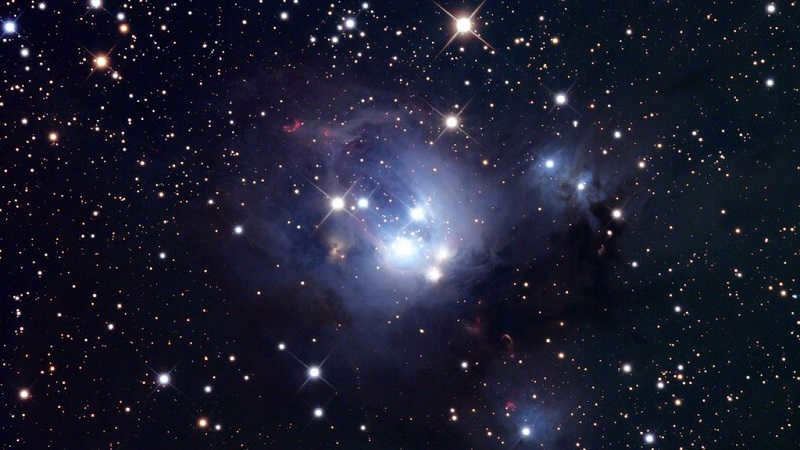
White dwarf stars
By the way, a white dwarf is a star that has reached the end of its life and is now cooling down. It is similar in size to our planet, but its mass is about the same as that of the sun. White dwarf stars belong to the spectral class A.
Have you ever wondered which stars become white dwarfs and what sets them apart from regular stars?
Well, the truth is that stars of small and medium size can become white dwarfs, but only at the very end of their life cycle. These stars are known as degenerate stars because the pressure of degenerate gas counteracts gravity within them.
Incidentally, this is the reason why white dwarfs have a unique structure compared to other celestial bodies. The immense pressure directly impacts the behavior of atoms, causing a gravitational collapse to occur. Consequently, the atomic nucleus and electrons become highly compressed and densely packed.
It is worth noting that the degenerate gas pressure prevents further collapse, resulting in the formation of a white dwarf star. However, this transformation only occurs if the mass of the star is less than 1.4 times that of the Sun. If the mass exceeds this threshold, a neutron star is formed instead.
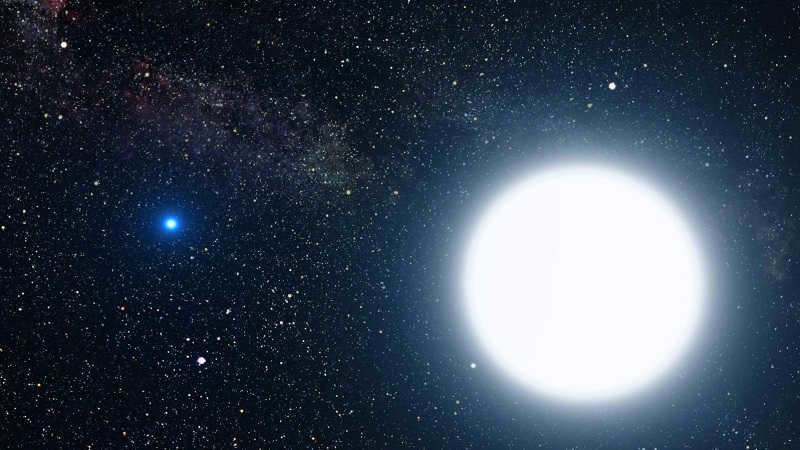
What is the name for yellow dwarf stars?
Yellow dwarf stars are actually a type of main-sequence stars classified as spectral class G. Their mass is estimated to be between 0.8 and 1.2 times that of the Sun.
Once all the hydrogen in a yellow dwarf star is depleted, it expands and transforms into a red giant.

Orange dwarf stars
Another category of small-sized main sequence stars with a spectral class K. They have masses ranging from 0.5 to 0.8 solar masses, and their lifespans are longer than those of our primary star.
We could describe the orange dwarfs as being in between the yellow and red counterparts.
Red dwarfs
A red dwarf star is a small celestial body with a low mass. As a result, these objects have a low temperature and emit a weak level of light. Due to this, they cannot be seen from Earth without the use of special instruments.
On the Hertzsprung-Russell diagram, red dwarfs are located at the bottom. They mainly belong to the late spectral class, most commonly the M class.
Our Milky Way galaxy is abundant with red dwarf stars. Astronomers estimate that they make up to 80% of all astronomical bodies within our galactic system.
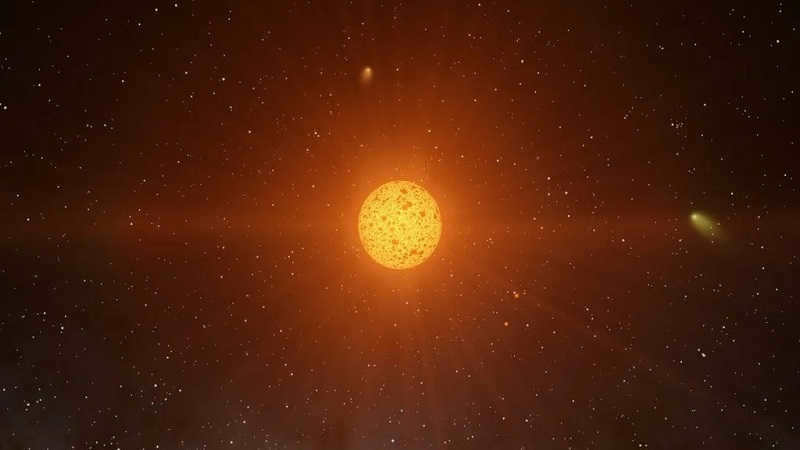
Brown representatives
Ultimately, the representatives of the brown dwarf are stars characterized by a subdued brightness (classified as T). This is due to their initial formation with a relatively small mass, which prevents any occurrence of nuclear reactions. Therefore, brown stars are essentially devoid of any nuclear reactions. Consequently, these celestial bodies are known for their extremely low temperatures.
Although they are capable of undergoing thermonuclear reactions to synthesize certain light elements such as lithium, boron, and beryllium, the release of heat is minimal, leading to the eventual cessation of nuclear processes. As a result, the brown star gradually cools down and transforms into planetary-like objects.
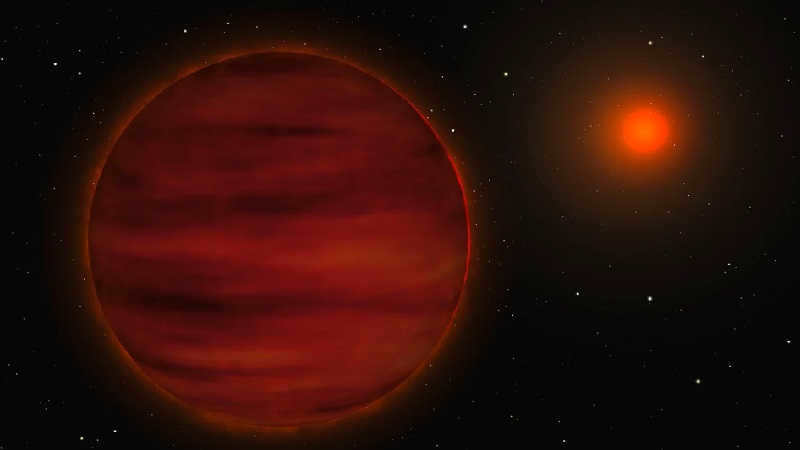
What are the names for dwarf stars that are black or dead stars?
Essentially, a black dwarf is a small, cold star that no longer undergoes nuclear reactions. This is either because it didn’t have enough mass for these processes to occur, or because the core exhausted all its fuel and the reactions simply ceased. In the latter case, they are referred to as dead or deceased celestial bodies.

Furthermore, there exist sub-brown or brown subdwarfs. These celestial bodies have a lower mass compared to brown dwarfs and are entirely devoid of heat. They are frequently classified as planets.
Examples of diminutive stars
Due to their abundant quantity, it would be impractical to enumerate all of them. However, we will highlight some of the most renowned among them.
For instance, the white dwarfs encompass the star Procyon (component B), while the orange ones consist of Alpha Centauri B or Arcturus.
The most basic and widely recognized yellow dwarf is our Sun.
In addition, Proxima Centauri (the nearest to Earth) and Antares are red dwarfs. However, as a representative of the brown category, we have Gliese 229B for example.
- A yellow dwarf is a type of small main-sequence star that has a mass ranging from 0.8 to 1.2 solar masses and a surface temperature of 5000-6000 K. Based on their name, they are considered yellow due to the results of photometry, although humans perceive their color as pure white (hotter stars are seen as blue or bluish by humans). These stars primarily derive their energy from the thermonuclear fusion of helium from hydrogen. The most well-known example of a yellow dwarf is the Sun. Other notable examples include Tau Ceti, Alpha Centauri A, Alpha Coronae Borealis, and 51 Pegasi.
Yellow dwarfs have surface temperatures ranging from 5000 to 6000 K, and their spectral classes are G0V-G9V. Spectral characteristics include intense calcium H and K lines, relatively strong 4226 Ǻ and iron lines, numerous metal lines, weakening hydrogen lines towards the K class, and an intense G band.
Similar concepts
An orange dwarf is a type of main-sequence star that falls between red dwarfs and yellow dwarfs in terms of spectral class and luminosity. With masses ranging from 0.5 to 0.8 times that of the Sun and effective temperatures of 3900-5200 K, orange dwarfs occupy an intermediate position in the stellar hierarchy.
Red dwarf stars, on the other hand, are small and relatively cool main-sequence stars that are classified as spectral class M or late K. These stars can be found on the Hertzsprung-Russell diagram.
A subgiant star is a former main-sequence star that is similar in size to the Sun or slightly larger. These stars have exhausted their hydrogen fuel in the core and have started burning hydrogen in the core shell, but they have not yet begun burning helium.
Brown stars, also known as substars or chemical stars, are substellar objects that have masses ranging from 0.012 to 0.0767 solar masses or 12.57 to 80.35 Jupiter masses. Similar to stars, they undergo thermonuclear reactions involving light elements such as deuterium, lithium, beryllium, and boron. However, unlike main-sequence stars, the contribution of hydrogen nucleus fusion is insignificant in these stars. Once the fusion reactions are exhausted, the heat release decreases.
A δ Shield type variable star (δ Sct) is a type of variable star that experiences significant changes in luminosity due to pulsations on its surface, both radial and non-radial.
Mentions in the literature
And the stars exhibit a range of colors! They can be blue, white, yellow, or red. The coldest stars are red and brown, while the hottest ones are white and blue. Our Sun falls into the category of yellow dwarfs based on astronomical classification. The temperature on the surface of the Sun can reach up to 6,000 degrees Celsius. If the temperature were halved, our star would be classified as a red dwarf. Conversely, if we increased the temperature to 1,500 degrees, it would become a brown star. On the other hand, if we extinguished the Sun’s glow, we would be left with Jupiter, a non-star known as a gas giant. Jupiter lacks the necessary mass to ignite and become a star.
Based on the astronomical spectral classification of stars, the Sun is classified as a “yellow dwarf,” which is a small star that derives its main source of energy from thermonuclear fusion of hydrogen and helium. This fusion process is what gives the Sun its yellow color.
Additional Related Concepts
Bright giants are a type of star that falls between giants and supergiants in terms of size and luminosity. While they possess luminosities similar to supergiants, they are generally not massive enough to be classified as such. Typically, bright giants have a mass of only a few solar masses.
Spectral classes refer to the classification of stars based on their emission spectrum, primarily determined by the temperature of their photospheres. Variations in the spectra of stars arise from differences in the physical properties of their atmospheres, such as temperature and pressure, which affect the ionization of atoms. The type of spectrum observed also depends on factors like the presence of magnetic and interatomic electric fields, variations in chemical composition, stellar rotation, and other influencing factors.
A red giant is a type of star characterized by its late spectral classes, high luminosity, and extended envelopes. Some well-known red giants include Arcturus, Aldebaran, Hakruks, and Mira.
A carbon star, on the other hand, is a specific subtype of red giant (or occasionally red dwarf) star that has a higher concentration of carbon than oxygen in its atmosphere. This leads to a mixing of the two components in the upper layers of the star, resulting in the formation of carbon monoxide. The carbon monoxide then binds with all the oxygen in the atmosphere, leaving the carbon atoms free to form other carbon compounds. As a result, carbon stars have a distinctive “blackish” atmosphere and a vibrant red appearance when viewed from the outside.
An exoplanet, also known as an extrasolar planet, refers to a planet that exists outside of our solar system. Detecting these planets has long been a challenge due to their small size and faintness compared to stars. Additionally, the vast distances between stars and our Sun further complicates the search for exoplanets (the closest one being 4.24 light-years away). However, in the late 1980s, scientists successfully discovered the first exoplanets.
The orbital period of a celestial body refers to the length of time it takes for that body to complete a full revolution around an external center of gravity or a shared center of mass with another celestial body.
Semi-regular variable stars are characterized by their long-period pulsations and notable fluctuations in luminosity. These stars, which are typically giants or supergiants of intermediate to late spectral type, exhibit significant periodicity in their brightness changes, often accompanied by intermittent irregularities. The duration of their light variations can span from 20 to 2000 days or even longer, and the shapes of their light curves can exhibit considerable diversity.
A giant star is a stellar object that is larger in size and has higher brightness compared to main-sequence stars of the same temperature. These stars typically have radii ranging from 10 to 100 times that of our Sun and luminosities between 10 and 1000 times that of our Sun. Stars with even higher luminosities are known as supergiants and hypergiants. Main-sequence stars that are both hot and bright can also be classified as white giants. Furthermore, due to their large size and mass.
White dwarfs, on the other hand, are stars that have evolved beyond the main sequence and have masses below the Chandrasekhar limit, which is the maximum mass a star can have to exist as a white dwarf. These stars no longer have their own thermonuclear energy sources.
Mirids are a group of variable stars that exhibit pulsations in their brightness. They are named after the star Mir, which is located in the constellation Keith. Mirids are characterized by their late spectral classes and have light variations of more than 2.5 stellar magnitudes in the visible range. The period of their pulsations can range from 80 to 1000 days. These stars are in the giant phase of stellar evolution, and within a few million years, they shed their outer shell and transform into white dwarfs.
Swan is a constellation that can be found in the northern hemisphere of the sky. The bright stars in this constellation form a distinct cross-shaped pattern known as the Northern Cross asterism. This pattern stretches along the Milky Way. In ancient times, people associated Swan with a flying bird. The Babylonians referred to it as the “forest bird,” while the Arabs called it a chicken.
The magnitude of a celestial body that is visible to an observer on Earth is a measure of its brightness, specifically the amount of illumination it produces. This value is typically adjusted to account for the presence of Earth’s atmosphere. A higher stellar magnitude indicates a dimmer object.
A double star, also known as a double system, refers to a pair of stars that are gravitationally bound to each other and revolve around a shared center of mass. Binary stars are a prevalent phenomenon, with approximately half of all stars in our Milky Way galaxy existing as part of a binary system.
A multiple star is a system consisting of three or more stars that appear close to each other when observed from Earth. This closeness can either be an optical illusion, where stars at different distances appear close in the line of sight, or it can be a result of the stars being physically close and gravitationally bound together. In the latter case, the star is referred to as a physically multiple star. Physically multiple stars belong to the category of multiple star systems.
Lyra (લેયરા, Latin Lyra, Lyr) is a small constellation located in the northern hemisphere, positioned between the constellations Hercules and Swan.
Irregular variable stars are a unique type of variable star that exhibit changes in brightness according to an unpredictable pattern. There are two distinct categories of irregular variables: eruptive and pulsating.
Gemini, also known as the Twins, is a constellation located in the northern hemisphere of the sky. The two brightest stars in Gemini are Pollux and Castor, which have visual stellar magnitudes of 1.16 and 1.59, respectively. The Sun transits through Gemini from June 20 to July 20, with the best visibility conditions occurring in December and January. The constellation is visible throughout Russia.
The Sun, represented by the symbol ☉, is a prominent member of our galaxy, the Milky Way, and serves as the central star of our Solar System. The Sun’s gravitational pull governs the motion of the planets, their satellites, dwarf planets, asteroids, meteoroids, comets, and space dust within the Solar System.
Volopassus (Latin Boötes from Greek Βοώτης, “plowman (on oxen)”; Boo) is a constellation located in the night sky of the northern hemisphere. The best time to observe this constellation is during the spring and the first half of summer. It is visible throughout the entirety of Russia.
Andromeda (Latin: Andromeda) is a constellation that can be found in the northern hemisphere of the night sky. It consists of three stars that have a magnitude of the second stellar level. Additionally, the spiral galaxy Andromeda (M31) can also be observed with the naked eye. This galaxy has been known to astronomers since the 10th century.
Accretion (Latin accrētiō “accretion, increase” from accrēscere “to accrete”) refers to the process by which a celestial body gains mass through the gravitational attraction of matter, usually gas, from the surrounding space.
The term “naked eye” is used to describe the visual perception of an individual who does not rely on any additional equipment such as telescopes, microscopes, magnifying glasses, spectacles, monocles, lenses, or binoculars. This person has regular vision and is able to see without any aids. However, individuals with impaired vision have a reduced ability to see without assistance and must rely on glasses or lenses to enhance their vision.
This compilation presents a list of stars that are closest to Earth, arranged in ascending order based on their distance. It includes stars that are within a distance of 5 parsecs (equivalent to 16,308 light years) from Earth. Currently, there are 57 known stellar systems, including the Sun, that potentially fall within this range. These systems consist of a total of 64 stars and 13 brown dwarfs.
A light-year, also known as a св. year in Russian or ly internationally, is a measurement unit used in astronomy to quantify the distance that electromagnetic waves (commonly referred to as light) can travel in a vacuum without being affected by gravitational fields within one Julian year. Although it is not part of the SI system, it is commonly utilized in astronomical calculations.
A star is an immense sphere composed of gas, emitting light and maintained in a state of equilibrium by the opposing forces of its own gravity and internal pressure. Deep within a star, fusion reactions take place (or have occurred in the past). The Sun, a representative example of a G-class star, is the closest star to Earth.
Cancer, a zodiacal constellation, is rather inconspicuous and can only be observed on a clear night between the constellations Leo and Gemini. The brightest star in Cancer, known as β Cancer, has an apparent magnitude of 3.53m.
Korma (Latin: Puppis, Pup) is a constellation situated in the southern part of the sky, within the Milky Way. It covers an area of 673.4 square degrees and contains 241 stars that can be seen without the aid of a telescope. The constellation is partially visible throughout Russia, with more of it becoming visible the further south you go. The brightest star in Korma, ζ Korma, can be seen from a latitude of 50° and rises at approximately 6°30' in Adler and 8°30' in the south of Dagestan. In the southernmost cities and.
Scorpio (Latin: Scorpius) is a constellation of the zodiac that is found in the southern sky, positioned between Sagittarius to the east and Libra to the west. It is entirely located within the Milky Way and is bordered by Serpens to the north and Sacristan to the south.
The Big Dipper (also known as Ursa Major) is a well-known constellation located in the sky of the northern hemisphere. Composed of seven stars, the Big Dipper takes the shape of a ladle with a handle. Among these stars, Alioth and Dubhe shine the brightest, boasting an apparent sidereal magnitude of 1.8. Interestingly, the two outermost stars (α and β) of this constellation can be utilized to locate Polaris.
Constellations, in the realm of modern astronomy, are designated sections that divide the celestial sphere, enabling easy navigation of the starry sky. In ancient times, constellations were recognized as distinct patterns formed by prominent stars.
Volk (Latin: Lupus) is a constellation situated in the southern sky, positioned between Centaurus and Scorpius. In Russia, it can be partially observed in the central and southern regions, but its complete visibility is limited to latitudes south of 35° north. The brightest star in the constellation, α Wolf, has a magnitude of 2.3m; within Russia, this star is only visible in southern Dagestan. The optimal viewing conditions for Volk are in the month of May.
Hot Jupiters belong to a category of planets with masses comparable to that of Jupiter (1.9⋅1027 kg). Unlike Jupiter, which is located 5 astronomical units away from the Sun, a typical hot Jupiter is approximately 0.05 astronomical units away from its star. This means that a hot Jupiter is one order of magnitude closer to its star than Mercury is to the Sun, and two orders of magnitude closer than Jupiter. All known hot Jupiters are exoplanets.
A double star system is referred to as a spectrally double system when the duality is detected through spectral observations. Typically, these systems consist of components with large velocities and are positioned so close together that they cannot be distinguished separately using contemporary telescopes. Due to the orbital motion of the stars around the center of mass, one star approaches us while the other moves away, resulting in unequal radial velocities (along the direction to the observer) and, as a result.
There are three classifications of stars that bear a resemblance to the Sun: a solar-type star, a solar-analog star, and a solar double. The study of these stars plays a crucial role in gaining a deeper understanding of the Sun’s characteristics, whether it is truly unique or rather typical among other stars, and the potential existence of habitable planets in other solar-type stars.
Perseus, a constellation situated in the northern region of the sky, derives its name from the Greek hero who vanquished the Gorgon Medusa. It is among the 48 constellations identified by Ptolemy and has been recognized by the International Astronomical Union as one of the 88 contemporary constellations. Notable celestial bodies found within Perseus include the variable star Algol (β Per) and the radiant point of the annual Perseid meteor shower.
A blue giant is a type of star classified as spectral class O or B. Blue giants are young, massive stars that are located in the main sequence region of the Hertzsprung-Russell diagram. These stars can have masses ranging from 10 to 20 times that of the Sun, and their luminosity is thousands to tens of thousands of times greater than that of our Sun.
A red supergiant, on the other hand, is a massive and extremely large star. It belongs to the spectral class K or M and has a luminosity class of I. Examples of red supergiants include Antares and Betelgeuse.
Absolute stellar magnitude is a physical measurement that describes the brightness of an astronomical object. The definition of absolute magnitude varies depending on the type of object being observed.
The Bortle scale is a scale with nine levels that evaluates the brightness of the night sky in a specific area. It gauges the visibility of celestial objects for astronomers and the extent of light pollution interference. The creator of this scale, John E. Bortle, introduced it in the February 2001 edition of Sky & Telescope. Its primary purpose was to assist amateur astronomers in determining the level of darkness at their observation sites and to enable comparisons between different locations. The scale is categorized into different classes.
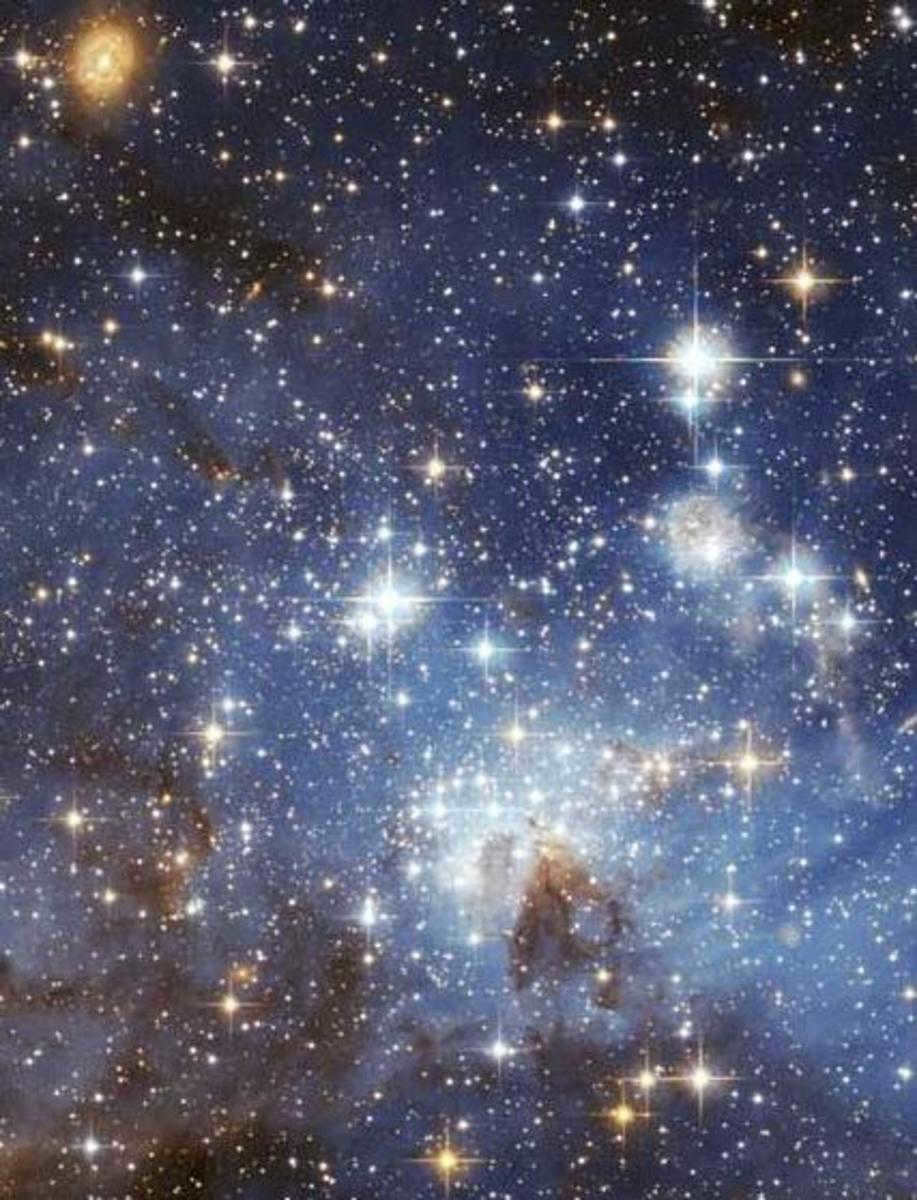
A star-forming region in the Large Magellanic Cloud has been captured in an image by the Hubble Telescope.
This image is credited to NASA, ESA, Hubble Legacy Group.
Stars, which are massive spheres of ignited gas, illuminate the vastness of space and provide the building blocks for planets and life. They come in various sizes and types, ranging from smoldering white dwarfs to blazing red giants.
Stars are commonly classified based on their spectral class. While they emit light across the entire color spectrum, spectral classification focuses on the peak emission, which indicates the surface temperature of the star. According to this system, blue stars are the hottest and fall into the O-type category. On the other hand, red stars are the coolest and belong to the M-type classification. The spectral classes, in order of increasing temperature, are M (red), K (orange), G (yellow), F (yellow-white), A (white), B (blue-white), and O (blue).
This soft classification is frequently discarded in favor of a more apparent alternative. As the most stylish stars (red stars) are consistently the tiniest, they are labeled as red dwarfs. Conversely, the most sizzling stars are often denoted as blue giants.
There are several distinct physical attributes that vary for every category of star. These attributes encompass surface temperature, luminosity (brightness), mass (weight), radius (size), lifetime, dominance in space, and the stage in the stellar evolutionary cycle.
Sun: physical attributes
- Lifespan: 10 billion years.
- Evolution: intermediate (4.5 billion years)
- Brightness: 3,846 × 10 26 W
- Temperature: 5,500°C
- Spectral type: G (yellow)
- Radius: 695,500 km
- Mass: 1.98 × 10 30 kg
When it comes to physical attributes, various types of stars are typically compared to our nearest stellar companion, the Sun. The aforementioned data provides solar measurements. To comprehend the scale, the notation 10 26 implies that there are 26 zeroes following the number.
The subsequent descriptions of star types will be based on the Sun. For instance, a mass of 2 signifies two times the mass of the Sun.
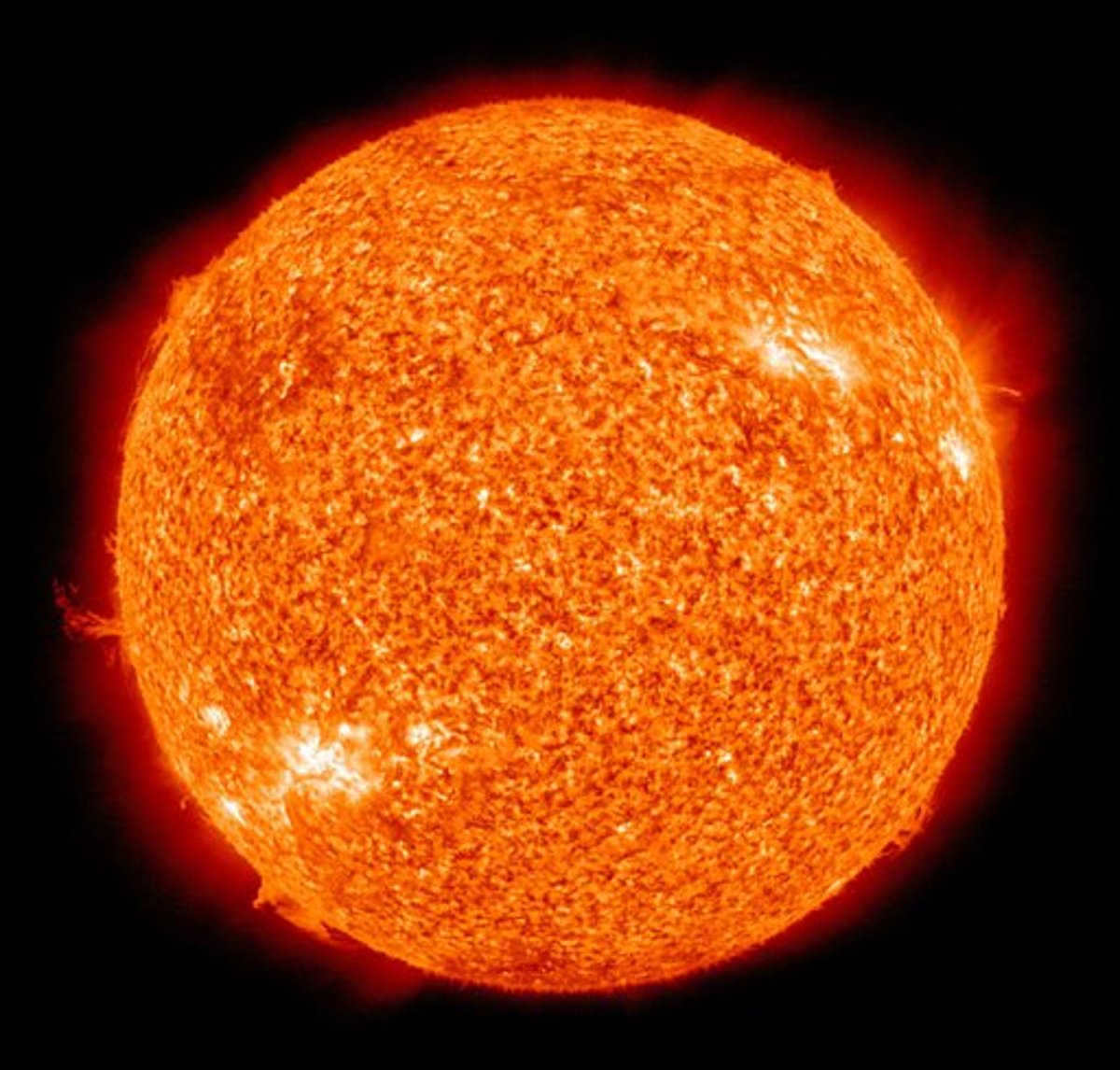
NASA / SDO (AIA) via Wikimedia Commons
1. Yellow dwarf stars
- Average lifespans: 4-17 billion years.
- Stage of development: early to intermediate
- Temperature range: 5,000 to 7,300 degrees Celsius
- Spectral types: G, F
- Brightness level: 0.6 to 5.0.
- Radius range: 0.96 – 1.4
- Mass range: 0.8 – 1.4
- Prevalence rate: 10%
The Sun, Alpha Centauri A, and Kepler-22 belong to the category of yellow dwarf stars. These celestial furnaces are currently in their prime phase as they consume hydrogen fuel in their cores. This normal process places them in the “main sequence” where the majority of stars are located. Although the term “yellow dwarf” may not accurately describe their color, as these stars typically appear whiter. However, due to the Earth’s atmosphere, they appear yellow when observed.
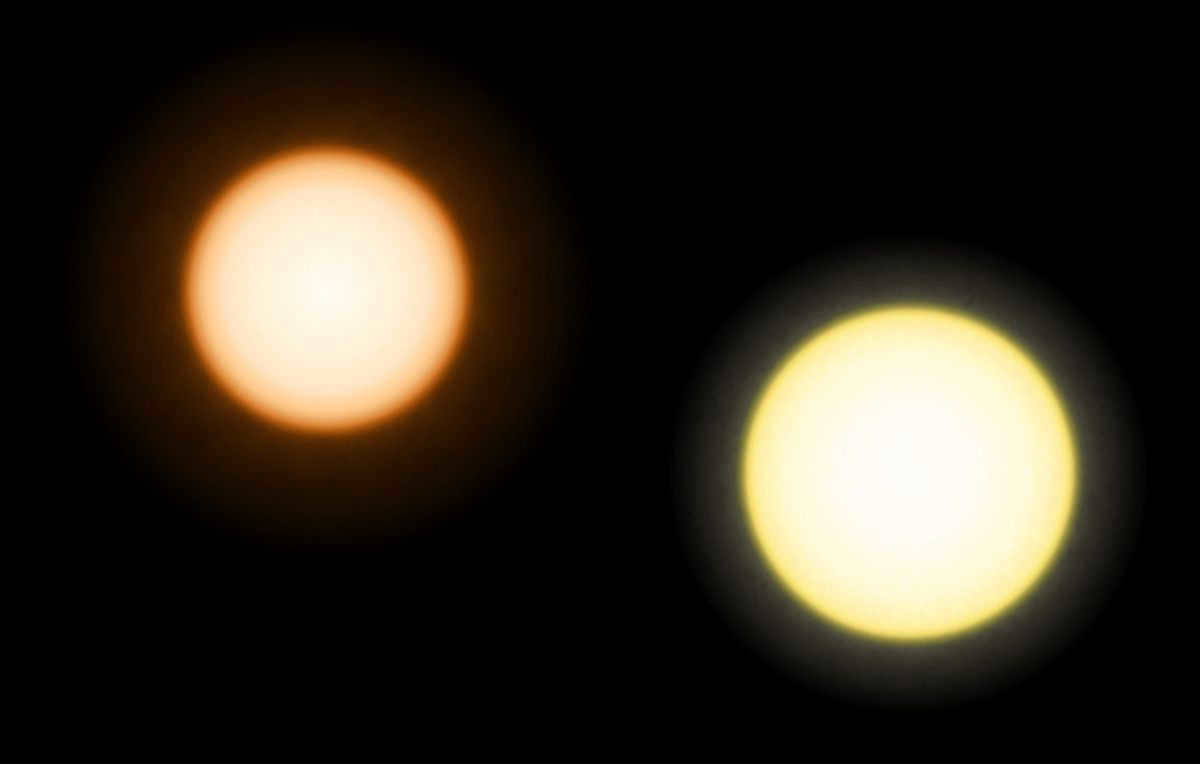
An illustration depicts the proximity of our Sun to an orange dwarf star called Epsilon Eridanus (on the left).
R.J. Hall via Wikimedia Commons
2- Orange dwarf stars
- Lifetimes: 17 – 73 billion years.
- Evolution: early to intermediate
- Temperature: 3500 – 5000 ° C
- Spectral types: K
- Luminosity: 0.08 – 0.6
- Radius: 0.7 – 0.96
- Mass: 0.45 – 0.8
- Prevalence: 11%
Orange dwarf stars, such as Alpha Centauri B and Epsilon Eridanus, exhibit smaller sizes, cooler temperatures, and longer lifespans compared to yellow dwarfs like our Sun. These main-sequence stars, similar to their larger counterparts, undergo hydrogen synthesis in their cores.
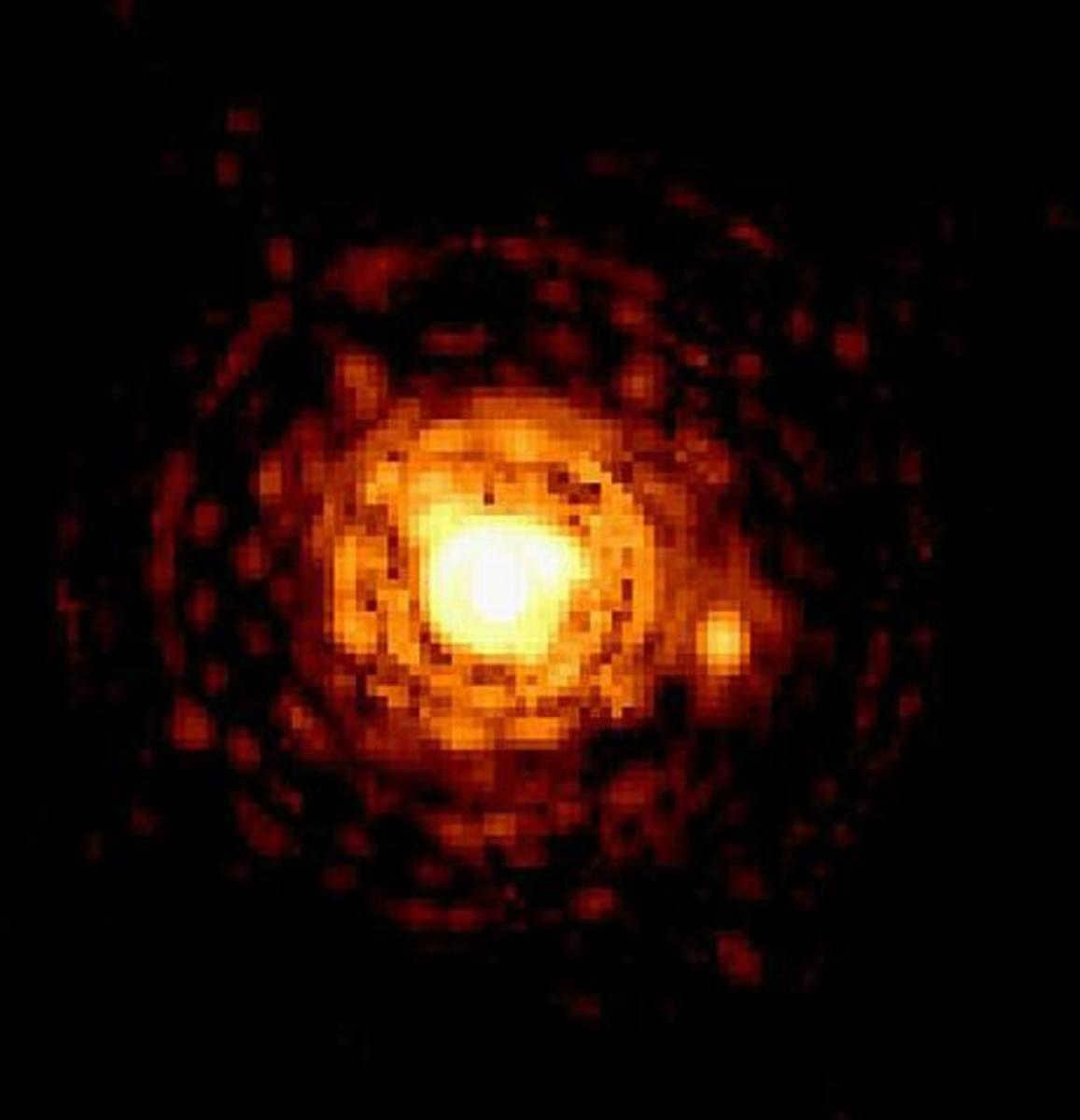
Red dwarf stars are known as double red dwarfs. Gliese 623B, the smaller star, has a mass that is only 8% of the Sun’s mass.
NASA/ESA and C. Barbieri via Wikimedia Commons
3. Red dwarf stars
- Lifetimes: 73 – 5500 billion years.
- Evolution: early to intermediate
- Temperature: 1800 – 3500 ° C
- Spectral types: M
- Luminosity: 0.0001 – 0.08
- Radius: 0.12 – 0.7
- Mass: 0.08 – 0.45
- Prevalence: 73%
Proxima Centauri, Barnard's Star, and Gliese 581 belong to the category of red dwarfs, which are the smallest stars in the main sequence. These red dwarfs have just enough heat to sustain the nuclear fusion reactions needed to utilize their hydrogen fuel. Despite their relatively low temperatures, they are the most abundant type of star in the universe, thanks to their impressively long lifetimes that surpass the current age of the universe, estimated at 13.8 billion years. This longevity can be attributed to the slow fusion rate and the efficient circulation of hydrogen fuel through convective heat transfer.
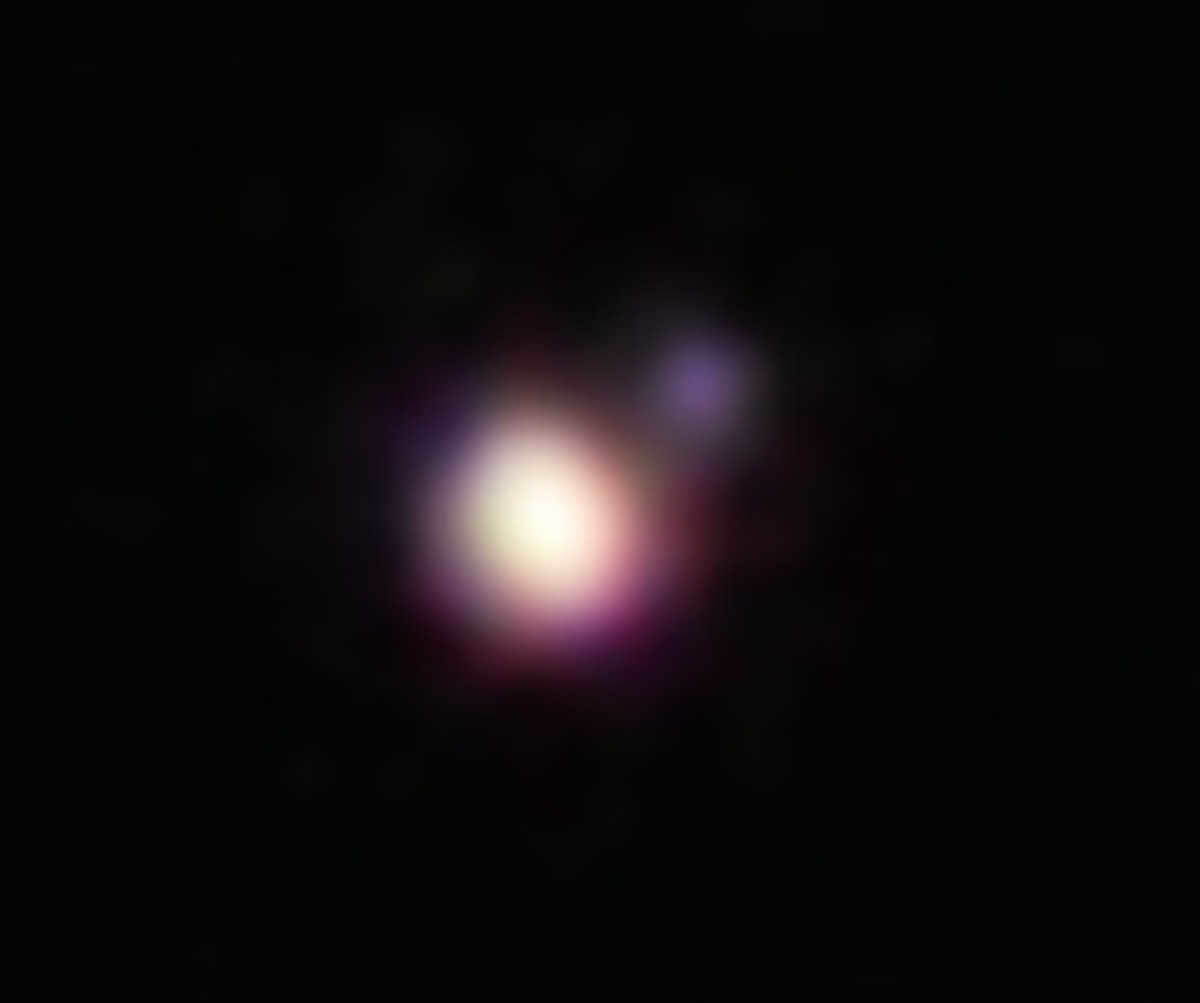
There are two small yellow dwarf stars in a binary system.
Michael Liu, from the University of Hawaii, took this photo and shared it on Wikimedia Commons.
4. Yellow Dwarfs
- Lifespan: uncertain (long duration)
- Evolution: not yet evolved
- Temperature: 0 – 1,800 °C
- Spectral types: L, T, Y (following M)
- Brightness: approximately 0.00001
- Radius: 0.06 – 0.12
- Mass: 0.01 – 0.08
- Prevalence: uncertain (numerous)
Brown dwarfs are celestial objects that did not have enough mass to ignite and become stars. They are too small to generate the necessary heat for hydrogen fusion. Brown dwarfs occupy a position between the smallest red dwarfs and massive gas giants like Jupiter. While they have a similar size to Jupiter, brown dwarfs must have a minimum mass of 13 times that of Jupiter to be classified as such. Their cool surfaces emit radiation beyond the red portion of the electromagnetic spectrum, resulting in a purple appearance to human observers instead of the expected brown. As brown dwarfs cool over time, they become increasingly challenging to detect, making it uncertain how many of them exist.
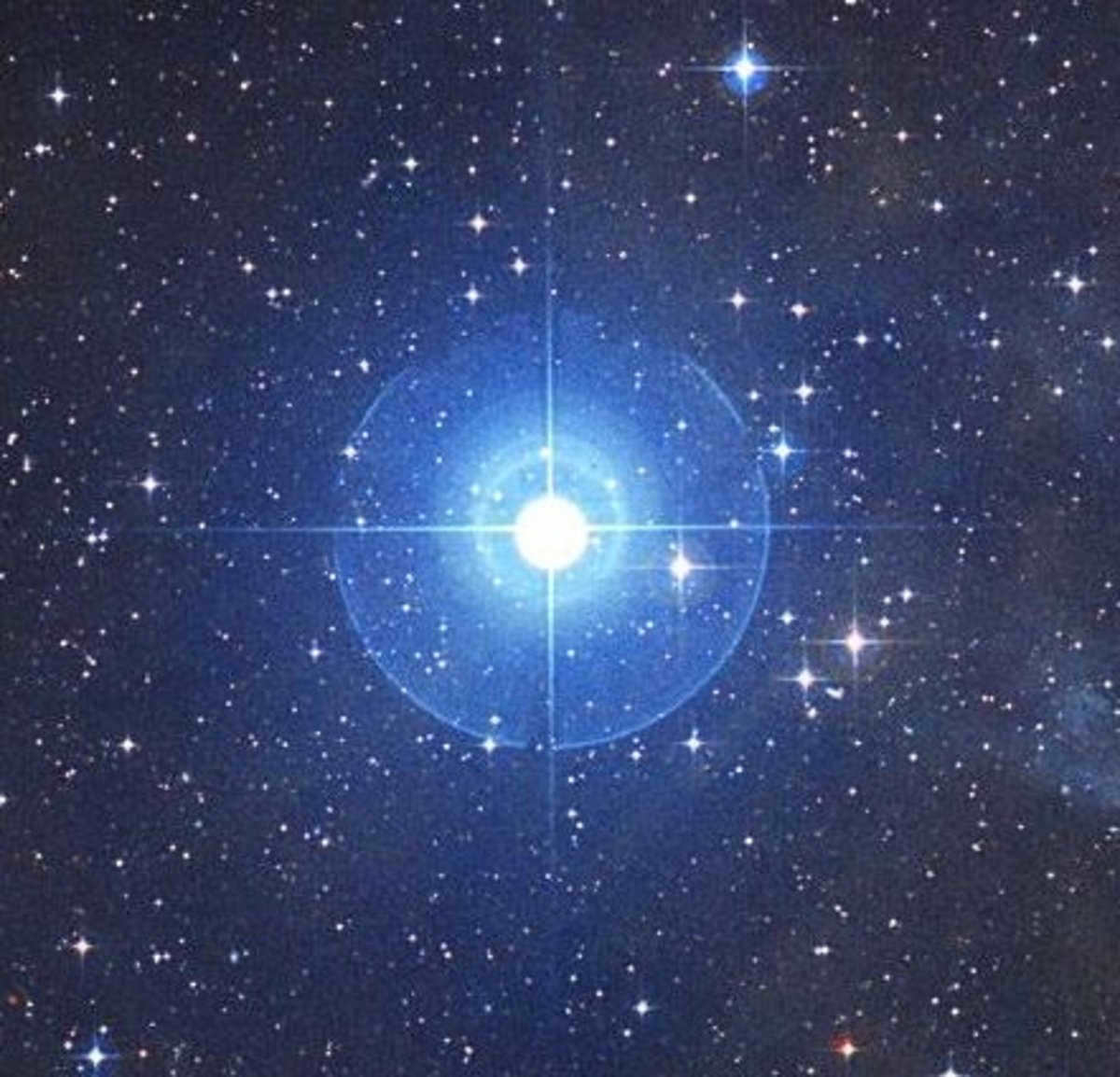
A close-up of Rigel, a blue giant star. Rigel is 78 times larger than the Sun.
NASA / STScI digitized sky survey
5. Blue giant stars
- Lifespan: 3 to 4,000 million years.
- Evolution: early to intermediate
- Temperature: 7,300 to 200,000 ° C
- Spectral types: O, B, A
- Luminosity: 5.0 to 9,000,000.
- Radius: 1.4 – 250
- Mass: 1.4 – 265
- Prevalence: 0.7%
Blue giants are described as large stars with a bluish coloration, although the definitions can vary. A broad definition was chosen because only about 0.7% of stars fall into this category.
Blue supergiants weighing more than 30 times the mass of the Sun have the potential to shed massive outer layers, revealing their superhot and radiant cores. These celestial bodies are referred to as Wolf-Rayet stars. Due to their immense size, these massive stars are prone to exploding in a supernova event before they can undergo further evolution, such as becoming a red supergiant. Following a supernova, the remaining star transforms into either a neutron star or a black hole.
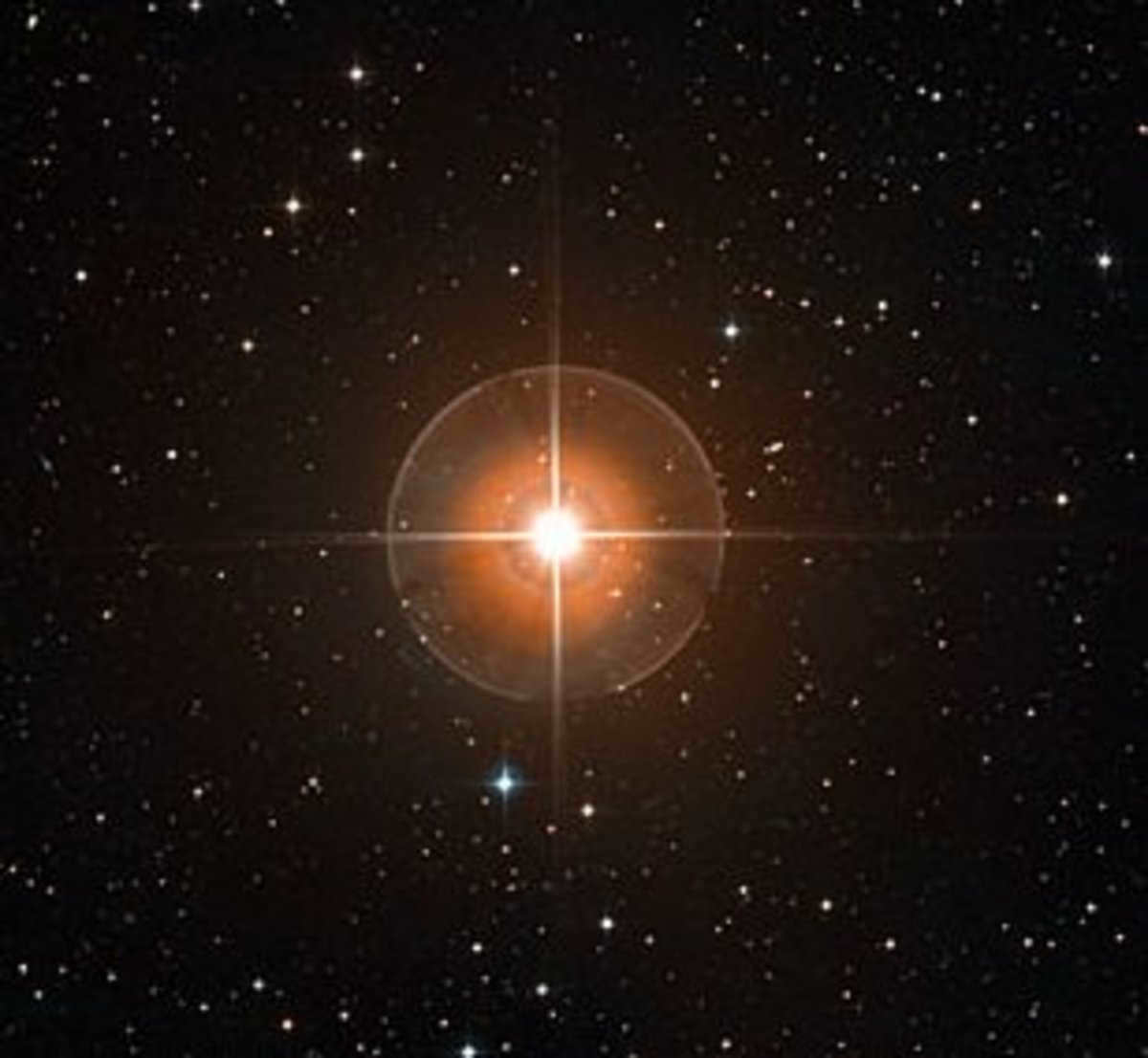
Up close view of a dying red giant star captured by T. Leporis. This star is an astounding 100 times larger in size compared to the Sun.
The European Southern Observatory was able to capture this incredible image.
6. Red giant stars
- Lifetimes: 0.1 to 2 billion years
- Evolution: late
- Temperature: 3000 – 5000 ° C
- Spectral types: M, K
- Brightness: 100 – 1000
- Radius: 20 – 100
- Mass: 0.3 – 10
- Prevalence: 0.4%
Aldebaran and Arcturus are red giants. These celestial bodies are currently in a late stage of their evolution. Red giants were once main-sequence stars, similar to the Sun, with masses ranging from 0.3 to 10 times that of our solar system. Stars with smaller masses do not undergo the transformation into red giants because their cores lack the necessary density for generating the required amount of heat for expansion. On the other hand, larger stars progress into red supergiants or hypergiants.
During the red giant phase, the accumulation of helium resulting from hydrogen fusion causes the star’s core to contract, leading to an increase in internal temperature. As a consequence, hydrogen synthesis occurs in the outer layers of the star, causing it to grow in both size and brightness. Despite this enlargement, the surface temperature of red giants is actually lower, giving them a reddish hue. Eventually, these stars expel their outer layers, creating a planetary nebula, while their core evolves into a white dwarf.
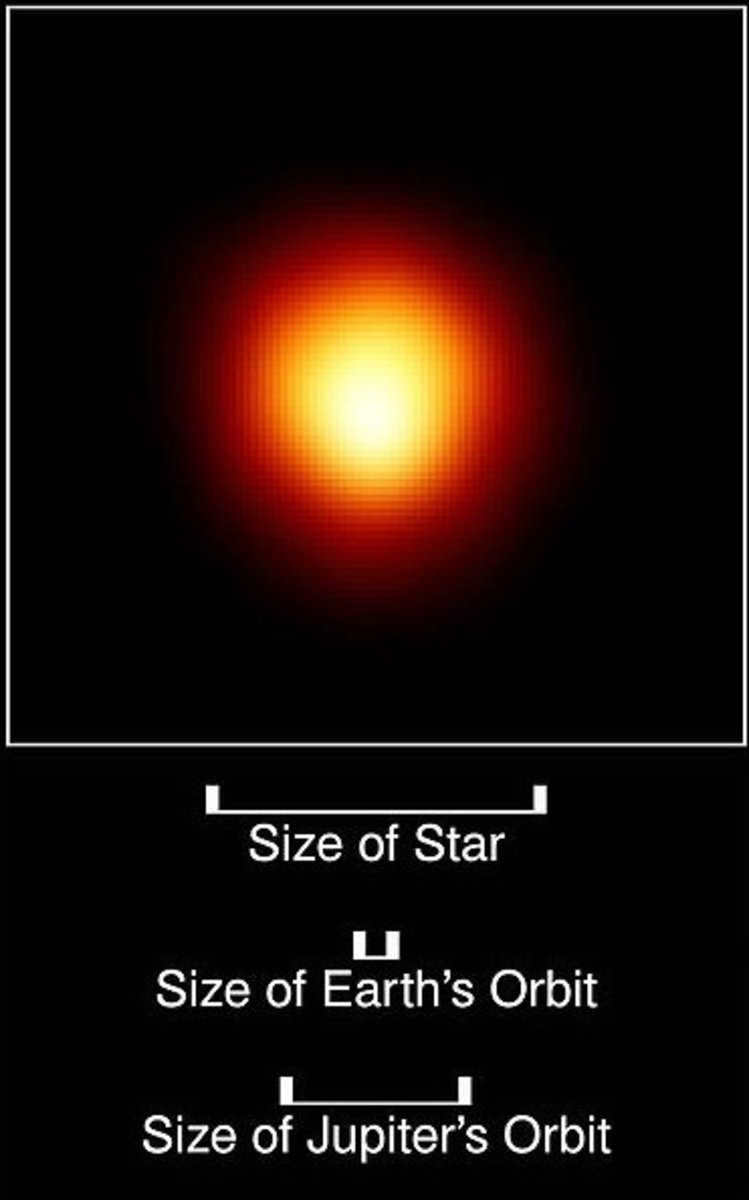
Betelgeuse, a red supergiant, is a thousand times bigger than the Sun.
NASA and ESA via Wikimedia Commons
7. Red supergiant stars
- Lifespan: 3 – 100 million years.
- Evolution: late
- Temperature: 3,000 to 5,000 ºC
- Spectral classifications: K, M
- Brightness: 1,000 to 800,000.
- Radius: 100 – 2000
- Mass: 10-40
- Prevalence: 0.0001%.
Betelgeuse and Antares belong to the category of red supergiant stars. Red hypergiants, the largest among these stars, are sometimes called red hypergiants. One of these stars, UY Scuti, is 1708 times bigger than our Sun and is the largest star known in the Universe. UY Scuti is located approximately 9,500 light-years away from Earth.
Similar to red giants, these stars have enlarged in size as a result of the compression of their cores, but they usually originate from blue giants and supergiants with masses ranging from 10 to 40 solar masses. Stars with higher masses shed their outer layers too rapidly, transforming into Wolf-Rayet stars or undergoing supernova explosions. Ultimately, red supergiants annihilate themselves through a supernova event, giving rise to a neutron star or a black hole.
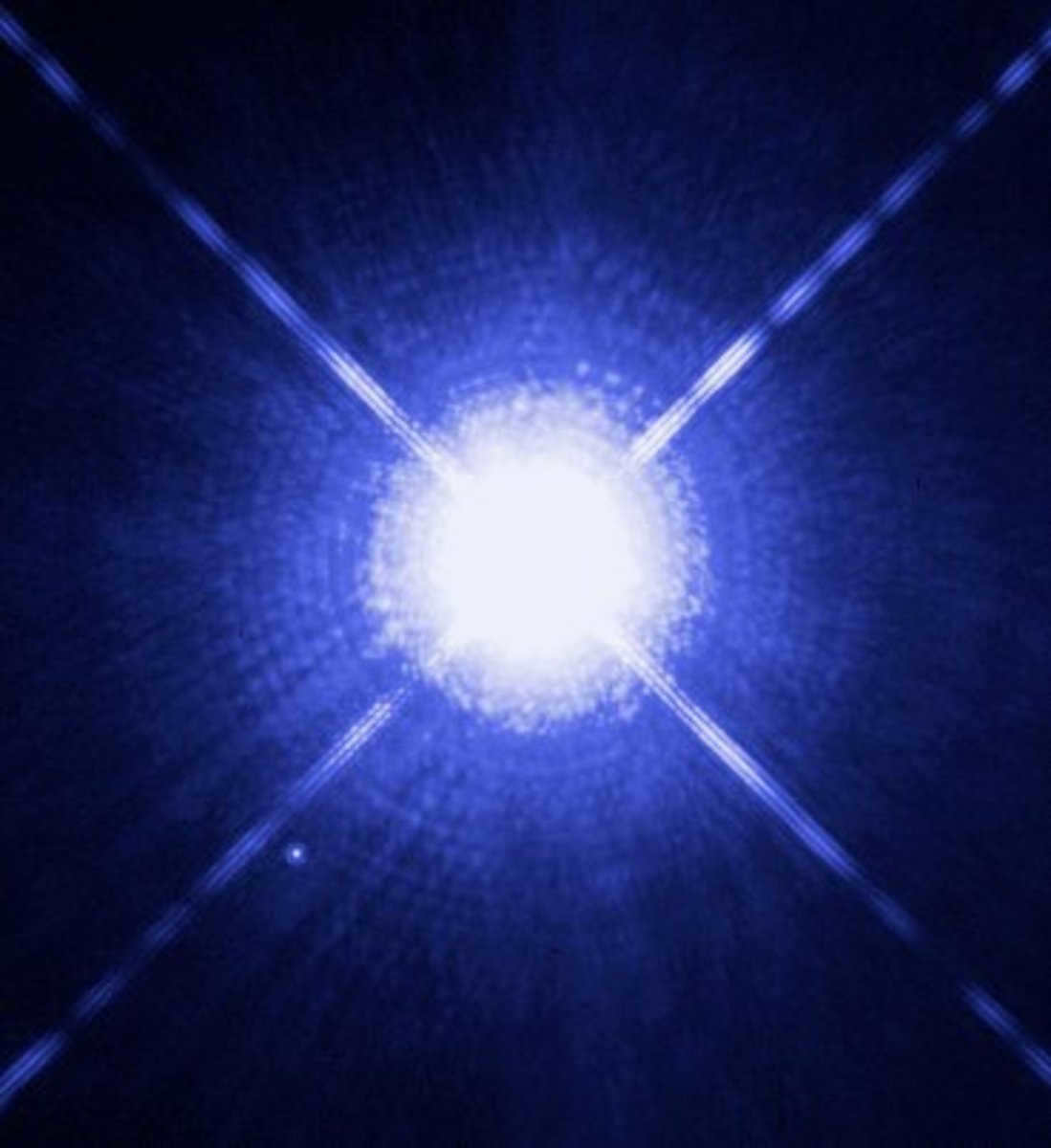
Sirius A’s small partner, known as Sirius B, is a white dwarf (see Bottom left).
NASA, ESA via Wikimedia Commons
8. White dwarfs
- Lifespan: 10^15 to 10^25 years.
- Evolution: deceased, cooling down
- Temperature: 4,000 – 150,000 °C
- Spectral types: D (degenerate)
- Brightness: 0.0001 – 100
- Radius: 0.008 – 0.2
- Mass: 0.1 – 1.4
- Prevalence: 4%
A white dwarf is what remains after a star has exhausted its nuclear fuel, and two well-known examples of white dwarfs are Sirius B and Van Maanen. It is estimated that over 97% of stars in the universe will eventually turn into white dwarfs. These compact objects are incredibly hot and will continue to radiate heat for trillions of years until they eventually cool down and transform into black dwarfs.
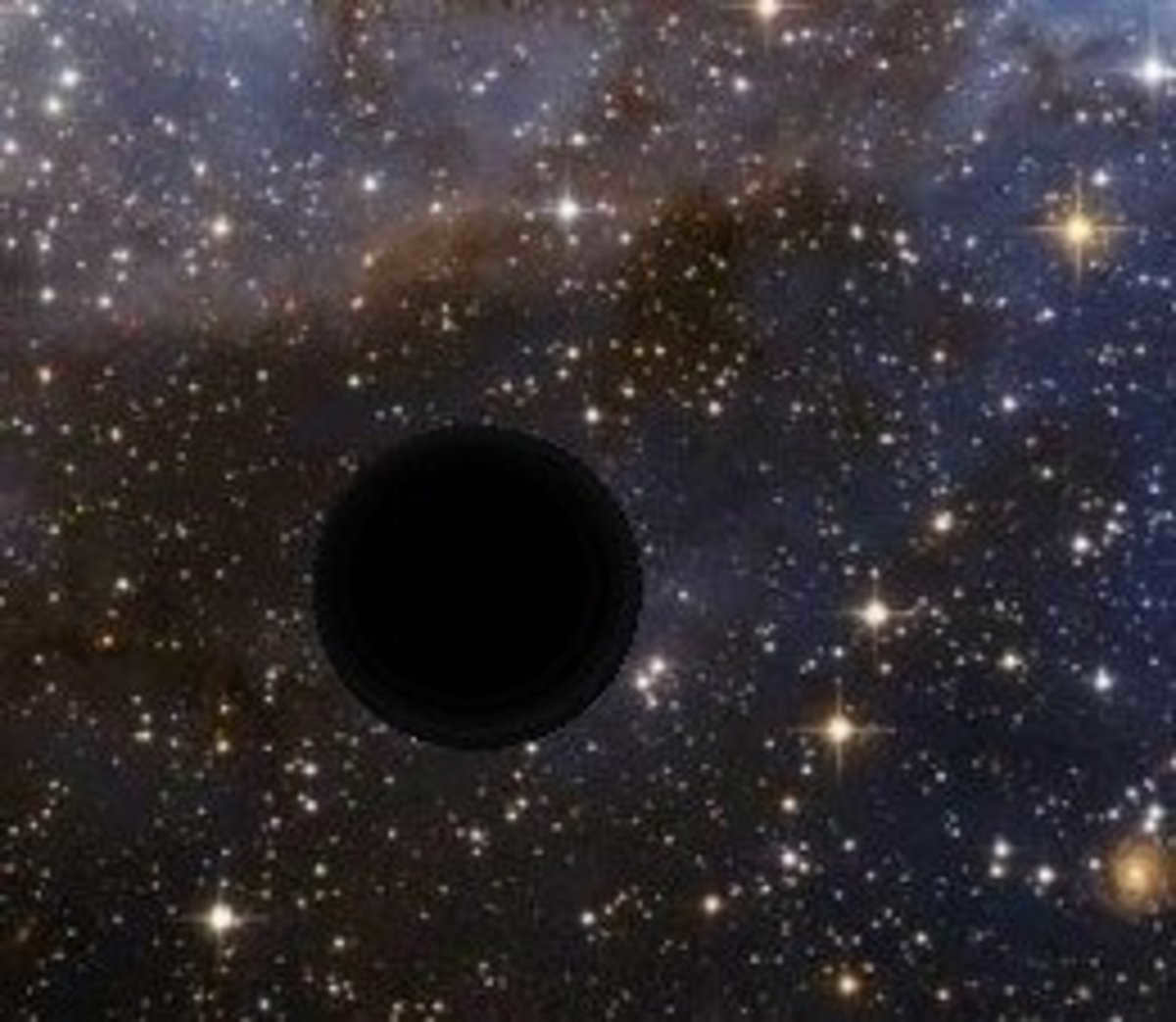
An artistic representation of the potential appearance of a yellow dwarf star among other celestial bodies.
9. Yellow dwarfs
After a star evolves into a white dwarf, it will gradually lose heat and transform into a yellow dwarf. Due to the limited age of the universe, it is thought that there are no active yellow dwarfs at present.
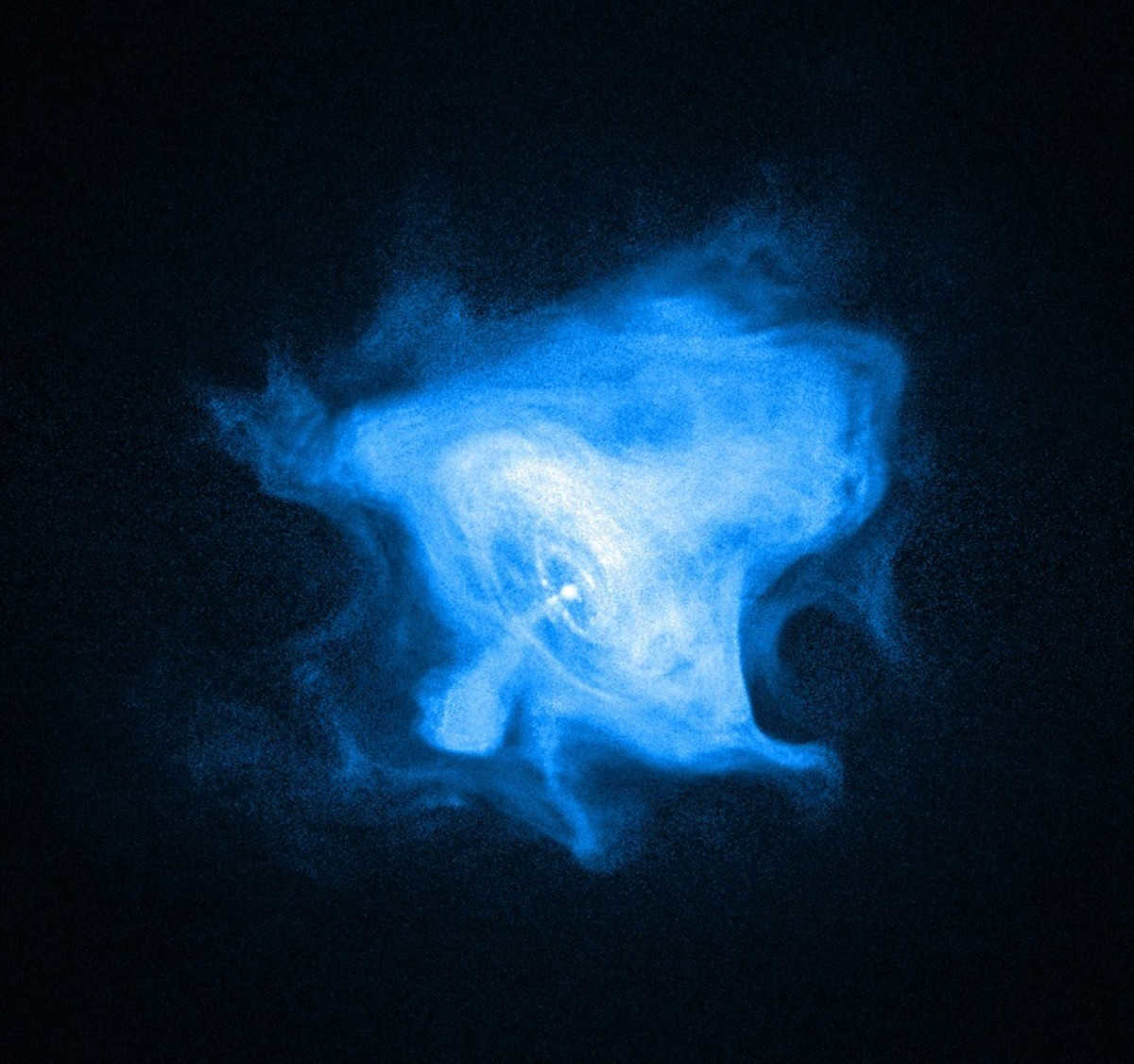
The Crab pulsar is a neutron star located at the center of the Crab Nebula, which is seen as a bright dot in the center. It was observed by NASA’s Chandra X-ray Observatory.
10. Neutron stars.
When stars with a mass larger than 10 solar masses exhaust their fuel, their cores undergo a violent collapse, forming neutron stars. If the core’s mass exceeds 1.4 solar masses, electron degeneracy cannot halt the collapse. Instead, electrons combine with protons to form neutral particles known as neutrons, which continue to shrink until they become degenerate and occupy less space.
The explosion of a supernova causes the collapse of a star, shedding its outer layers. The remaining star is made up mostly of neutrons and is incredibly dense, occupying a radius of approximately 12 km. Due to the conservation of angular momentum, these neutron stars often exist in a rapidly rotating state known as a pulsar.
If a star has a mass greater than 40 times that of our Sun and a core mass greater than 2.5 times that of our Sun, it is more likely to become a black hole instead of a neutron star. In order for a black hole to form, its density must reach a point where it overcomes neutron degeneracy, resulting in the collapse into a gravitational singularity.
Discover the wonders of the universe
Our solar system is home to the Sun, which is just one of the 400 billion stars that make up the Milky Way galaxy. As the closest star to our planet, the Sun played a crucial role in the formation of Earth. It is the solar activity of our Sun that drives numerous natural processes that are vital for sustaining life. In this article, we will delve into the fascinating journey of how our most important star came to be, explore its current state, and contemplate what the future holds for humanity.
Explore the article “Hitech” here
Chapter 1: The Birth of the Sun
The Sun came into existence approximately 4.5 billion years ago when a massive cloud of molecular hydrogen collapsed under the relentless pull of gravity. Scientists have put forward various hypotheses to explain the origin of our solar system, but the prevailing theory suggests that its formation was triggered by the explosion of one or more supernovae in the Milky Way.
This hypothesis is supported by the presence of unusually high levels of gold and uranium in the solar system’s primary matter. According to numerous mathematical models, these levels should be significantly lower, prompting scientists to explore the possibility of endothermic reactions resulting from a supernova explosion.
Over the past billion years, our Sun has resided in the inner region of the Milky Way’s Orion arm, specifically situated between the Perseus arm and the Sagittarius arm. This region, known as the Local Interstellar Cloud, exhibits a higher density compared to its surroundings within the lower-density Local Bubble. The Local Bubble itself encompasses a dispersed collection of interstellar gas with elevated temperatures.
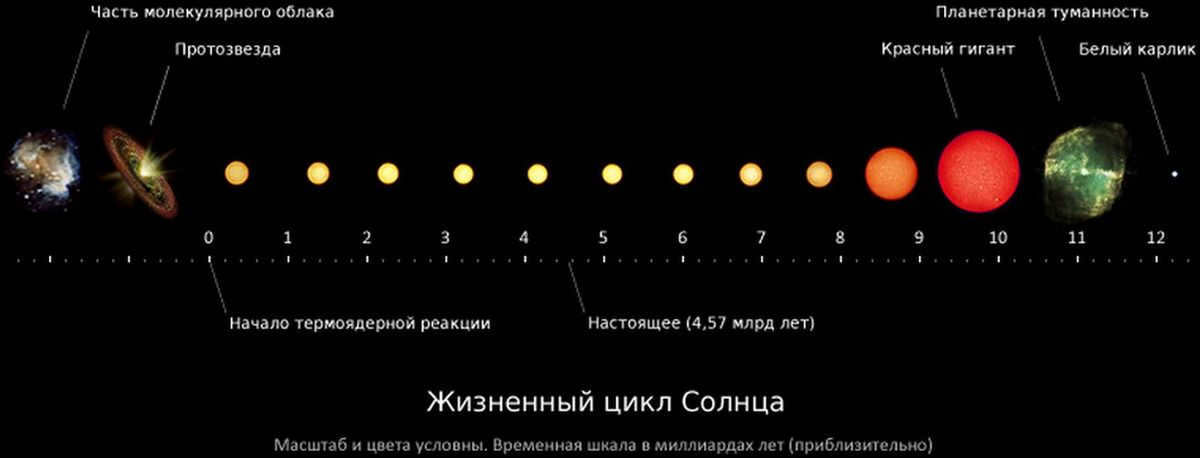
Following the gradual formation of the Sun from the remaining molecular gas cloud due to the force of gravity, other celestial bodies within the Solar System emerged. These include rocky dwarf planets located in close proximity to the star, as well as gas giants situated on the outer regions of the formation. The Sun comprises approximately 99.8% of the total mass of the Solar System and stands out due to its larger size and greater luminosity compared to 85% of the stars found across the Universe. The remaining 0.2% of the Solar System’s mass is distributed among the other planets, their satellites, asteroids, and interstellar dust, with Jupiter accounting for the majority of this mass.
Sun-like stars have an average lifespan of around 10 billion years, placing the Sun in the midst of its life cycle.
Based on its spectral classification, the Sun is categorized as a G2V (yellow dwarf) type star. The Sun has an average density of 1.4 g/cm³ which is 1.4 times greater than that of water. The temperature varies greatly depending on the layer of the star. The gas surface heats up to a maximum of 5 thousand degrees Celsius, while the outer surface, known as the solar corona, can reach temperatures as high as 2 million degrees Celsius. The temperature difference between these layers remains one of the main enigmas of the Sun’s structure, and Hitech has provided a detailed discussion on this topic.
The unique structure of the Sun also leads to different rotation rates within its layers. Unlike the Earth, the Sun is not a solid body, causing its various parts to rotate at varying speeds. At the equator, the surface completes one rotation every 25.4 days, while near the poles, it takes approximately 36 days to complete one rotation.
The average distance from the Earth to the Sun is 149.6 million kilometers, which is equivalent to one astronomical unit. At the same time, the Sun is located approximately 26 thousand light years away from the center of the Milky Way. It takes the solar system approximately 250 million years to complete one revolution around the center of the galaxy. The Sun has an average orbital speed of 217 km/hour, which means that it travels a distance of one light year in approximately 1.4 thousand Earth years and one astronomical unit in just eight Earth days.
Chapter 2: The Influence of the Sun on Earth
The Earth’s existence is deeply intertwined with the Sun’s impact. The radiation emitted by our nearest star serves as the primary energy source for numerous processes taking place on our planet. Light is essential for the initial stages of photosynthesis, which leads to the production of oxygen and the development of life. Additionally, solar heat plays a crucial role in determining Earth’s climate and temperature. Furthermore, solar energy has played a significant role in the formation of oil and other mineral resources.
The surface of our planet and the entire troposphere, which is the bottom part of the atmosphere where clouds are formed, receive direct energy from the Sun. Only 40% of the Sun’s radiation reaches the Earth’s surface, while the remaining 60% either stays in the atmosphere or gets reflected back into space. However, in recent years, the Earth’s atmosphere has started to absorb more solar radiation due to the greenhouse effect.
The sunlight plays a crucial role in various natural phenomena such as rain, fog, snowfall, hurricanes, and even the formation of El Niño. Moreover, sunlight triggers the formation of clouds, which eventually result in rainfall, and also leads to the creation of waves in the oceans, causing erosion of rocks.
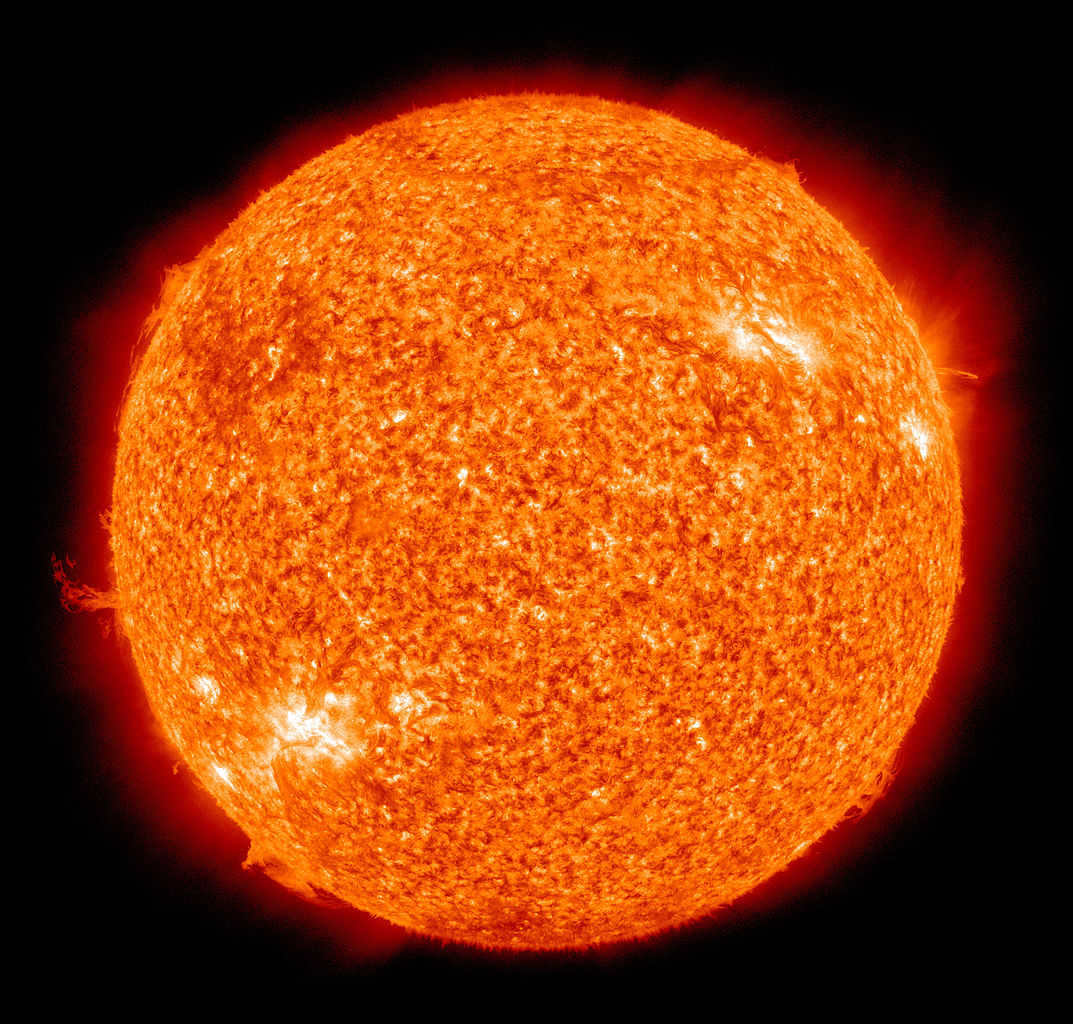
Heliobiologists have been focusing their attention on a fascinating phenomenon known as solar flares. These flares occur when the Sun releases streams of highly charged particles that can take several hours to reach our planet. While the Earth is partially shielded from these particles by its magnetosphere, their impact on orbiting satellites is significant.
Furthermore, the solar radiation emitted by the Sun poses a radioactive threat and negatively affects the progress of future human space missions. Despite our ambition to establish colonies on nearby planets, the Sun, despite being crucial to humanity’s development, also poses a hindrance to our advancement in space exploration. In a recent article, “Hitech” provides an in-depth look at the ongoing efforts to study the Sun and the use of satellites in this endeavor.
Chapter 3: The Destiny
Regrettably, the destiny of Earth is not looking promising. A star of the same magnitude as the Sun typically remains on the main sequence for approximately 10 billion years. However, the Sun has already been in existence for 4.5 billion years – approximately half of its potential lifespan.
As the Sun gradually depletes its hydrogen reserves, it grows increasingly hotter and its brightness gradually intensifies. In around 1.1 billion years – when it reaches the age of 5.5 billion years – the Sun’s luminosity will increase by 11%. Subsequently, the star will undergo a lengthy transformation into another classification, known as a red giant, which will ultimately lead to the complete extinction of life on Earth due to a dramatic rise in temperature and the greenhouse effect caused by heightened solar activity. During this phase, the Sun will attain its maximum temperature and subsequently cool down over time.
Recently, Chinese scientists have put forward a number of proposals for the Earth’s development and the potential for altering its orbit in order to prevent our planet from suffering the same fate as dry and hot Venus.
In approximately 8 billion years – 3.5 billion years from now – the Sun’s brightness will have increased by 40%. As the hydrogen fuel in the Sun’s core depletes and burns out, its outer shell will expand while the core itself shrinks and heats up. At this point, the Sun’s radius will have expanded to the extent that its surface will be in close proximity to present-day Venus.
When the age of the Sun reaches 10.9 billion years, the hydrogen in its core will deplete, resulting in a rise in temperature that will trigger the hydrogen burning process in the surrounding envelope. As a consequence, the Sun will undergo a classification change and transform into a red giant. During this phase, the Sun’s radius will have expanded to 256 times its current size, with its outer layers extending as far as the orbit of the Earth.
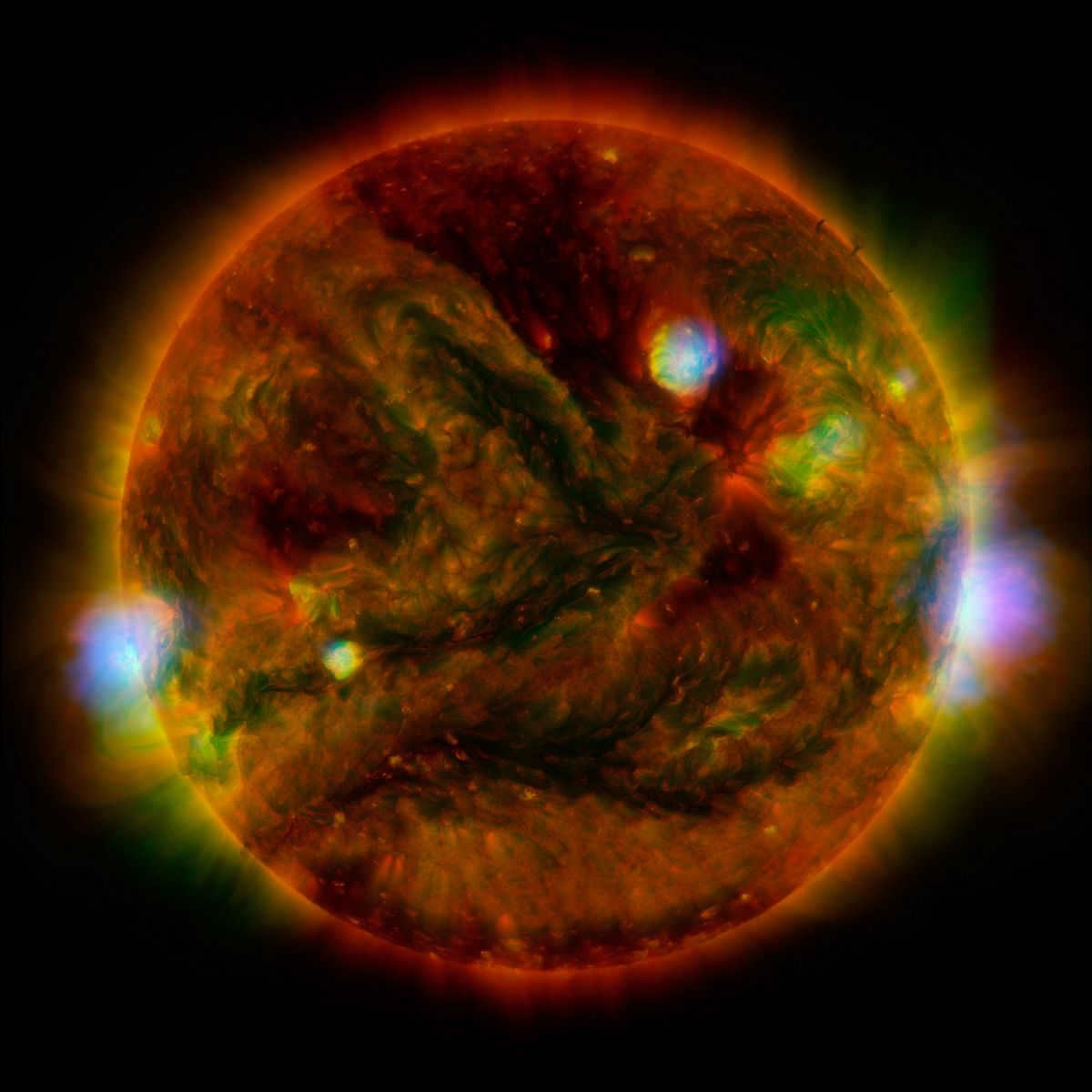
The white dwarf that arises from the demise of the Sun will slowly diminish over the course of billions of years. This sequence of events is deemed typical for stars of comparable size and composition to our Sun, thus it is highly improbable that the solar evolution will deviate from this trajectory. Unless, of course, humanity succeeds in constructing extraterrestrial colonies or fleeing to adjacent galaxies, we are improbable to witness such a dishonorable conclusion to our primary celestial body, a star known as the Sun.
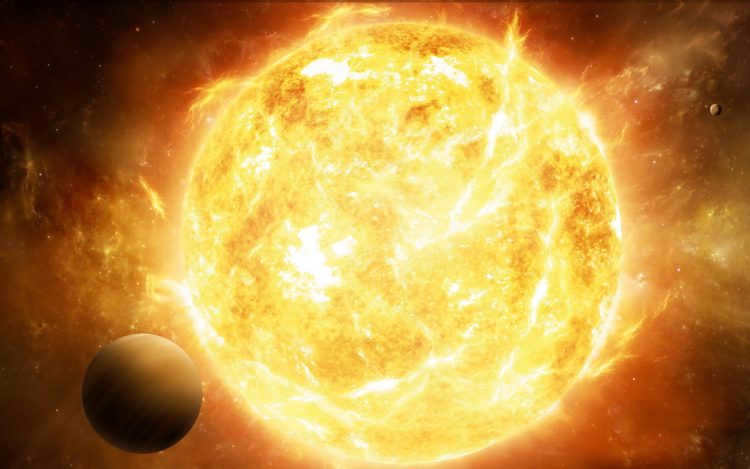
- Stars
Various Types of Stars in the Observable Universe
The universe is home to a wide variety of stars. They come in all sizes, temperatures, and charges. In this article, we will explore the main categories of stars and provide a detailed description of Yellow and White dwarfs.
- Yellow dwarf. A yellow dwarf is a specific type of small main-sequence star that falls within the mass range of 0.8 to 1.2 solar masses. It has a surface temperature ranging from 5000 to 6000 K. More information about this type of dwarf star will be discussed below.
- A white dwarf. A white dwarf is the remnant of a regular star with a mass less than 1.4 times that of the Sun after it goes through the red giant phase. For more detailed information about this particular type of star, please refer to the section below.
- Red dwarf. Red dwarfs are the most abundant type of celestial objects in the universe. Estimates suggest that they make up anywhere from 70 to 90% of all stars in our galaxy. They possess distinct characteristics that set them apart from other stars.
- Brown dwarf. Brown dwarfs are sub-stellar objects with masses ranging from approximately 0.01 to 0.08 times that of the Sun, or equivalently, 12.57 to 80.35 times the mass of Jupiter. They have a diameter roughly equivalent to that of Jupiter and do not undergo nuclear fusion reactions like main-sequence stars, which convert hydrogen into helium.
- Sub-brown dwarfs. Sub-brown dwarfs, also known as brown subdwarfs, are celestial bodies that have a lower mass limit than brown dwarfs. Their mass is less than approximately one hundredth of the Sun’s mass or 12.57 times the mass of Jupiter, although the exact lower limit is still uncertain. While they are often classified as planets, the scientific community has yet to reach a definitive consensus on whether to classify them as planets or sub-brown dwarfs.
- Black dwarf. Black dwarfs are essentially white dwarfs that have cooled down to the point where they no longer emit visible light. They represent the final stage of evolution for white dwarfs. The mass of black dwarfs, like that of white dwarfs, is limited to a maximum of 1.4 times the mass of the Sun.
- A binary star. A binary star refers to a system of two stars that are gravitationally bound to each other and orbit around a common center of mass.
- A nova star. A nova star is a type of star that experiences a sudden increase in luminosity by a factor of 10,000. It is a binary system consisting of a white dwarf and a main sequence companion star. In these systems, gas from the companion star accumulates on the surface of the white dwarf and periodically triggers explosions, resulting in a burst of luminosity.
- A supernova star. A supernova star is a star that undergoes a catastrophic explosion at the end of its evolution. The explosion can be many times more powerful than that of a nova star. This immense explosion is a result of the processes occurring during the final stages of the star’s life.
- Neutron star. Neutron stars (NS) are celestial bodies with masses around 1.5 times that of the Sun and sizes significantly smaller than white dwarfs, measuring approximately 10-20 km in diameter. These extraordinary formations are primarily composed of neutral subatomic particles known as neutrons, which are densely packed due to the immense gravitational forces. In our Milky Way galaxy, scientists speculate that there could be anywhere between 100 million to 1 billion neutron stars, roughly equating to one per thousand regular stars.
Yellow star
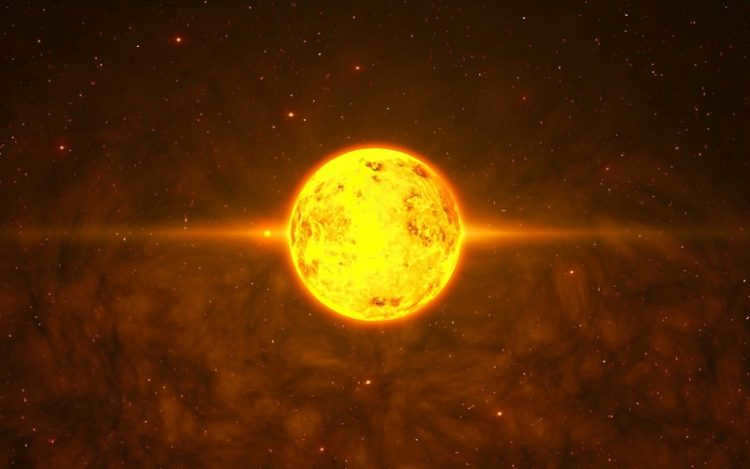
Stars are classified into different categories based on their evolutionary stage. These categories include normal stars, dwarf stars, and giant stars. Normal stars, also known as yellow dwarfs, are stars that are in the main sequence of their evolution. An example of a normal star is our very own Sun.
Characterization
Today we will briefly discuss yellow dwarfs, also known as yellow stars. Yellow dwarfs are typically stars of average mass, luminosity, and surface temperature. They are located in the middle of the Hertzsprung-Russell diagram, following the cooler and less massive red dwarfs.
Based on the Morgan-Keenan spectral classification, yellow dwarfs are primarily classified as luminosity class G. However, they can sometimes exhibit transient variations and be classified as class K (orange dwarfs) or class F in the case of yellow-white dwarfs.
The mass of yellow dwarfs typically falls between 0.8 and 1.2 solar masses. Additionally, their surface temperature ranges mostly from 5,000 to 6,000 Kelvin.
The most prominent and well-known example of a yellow dwarf is our very own Sun.
- Alpha Centauri A, which is similar to the Sun in terms of luminosity spectrum, and Alpha Centauri B, a typical K-class orange dwarf, are two components of the Alpha Centauri triple system. The distance to both components is slightly more than 4 light-years.
- Ran, also known as Epsilon Eridanus, is an orange dwarf star with a luminosity class of K. Astronomers estimate the distance to Ran to be about 10 and a half light-years.
- The double star 61 Swan is located just over 11 light-years away from Earth. Both components of 61 Swan are typical orange dwarfs with a luminosity class of K.
- Tau Kita, a sun-like star with a G luminosity spectrum, is approximately 12 light-years away from Earth. It possesses an interesting planetary system consisting of at least 5 exoplanets.
Education
The development of yellow dwarfs is a fascinating process. The average lifespan of a yellow dwarf is around 10 billion years.
Similar to other stars, yellow dwarfs undergo intense thermonuclear reactions within their core, primarily converting hydrogen into helium. As the star’s core begins to involve helium reactions, hydrogen reactions gradually move towards the surface. This marks the beginning of the transformation from a yellow dwarf to a red giant. One example of this transformation is the red giant Aldebaran.
Over time, the star’s surface gradually cools and its outer layers expand. In the final stages of its evolution, the red giant sheds its outer shell, forming a planetary nebula, while its core becomes a white dwarf, which continues to shrink and cool.
A similar fate awaits our Sun, as it is currently in the intermediate phase of its evolution. In approximately 4 billion years, it will initiate its transition into a red giant, expanding to a size that can engulf not only the Earth and Mars, but even Jupiter.
The lifespan of a yellow dwarf star is typically around 10 billion years. Once all of its hydrogen fuel is depleted, the star undergoes a significant increase in size and transforms into a red giant. This process leads to the formation of planetary nebulae, while the core collapses into a small and dense white dwarf.
White dwarfs
can be rephrased as
Stellar remnants known as white dwarfs
.
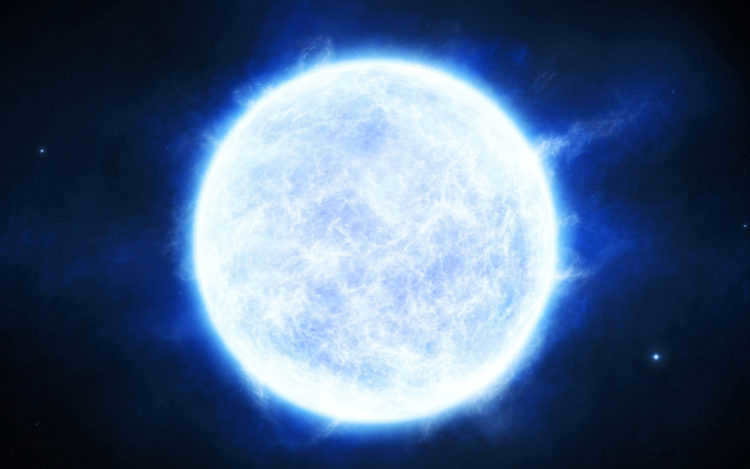
White dwarfs are a unique type of star that have a high mass, similar to that of the Sun, but a small radius, comparable to the size of the Earth. They are formed through the evolution of red giants, but their mass is below a certain limit known as the Chandrasekhar limit. This limit determines whether a star will become a white dwarf or undergo a different type of stellar evolution.
White dwarfs have stopped the process of thermonuclear energy production, which is responsible for the fusion reactions that power stars. As a result, these stars have special properties that distinguish them from other types of stars.
The exact number of white dwarfs in our Galaxy is not well known, but estimates suggest that they make up between 3% and 10% of the total stellar population.
Discovery of Sirius B and the Birth of White Dwarfs
In 1844, the renowned German astronomer and mathematician Friedrich Bessel made a groundbreaking observation while studying Sirius. He noticed a slight deviation in the star’s motion, leading him to believe that there might be an invisible, massive companion star.
This assumption was later confirmed in 1862 by Alvan Graham Clark, an American astronomer and telescope builder. Clark, while aligning the largest refractor of that time, stumbled upon a faint star near Sirius. This star was later named Sirius B.
Sirius B, a white dwarf, possesses a low luminosity and exerts a noticeable gravitational pull on its brighter companion. This suggests that the star has an incredibly small radius but a substantial mass. This discovery marked the birth of a new class of celestial objects known as white dwarfs. The second known white dwarf, Maanen, was later discovered in the constellation Pisces.
What is the process of white dwarf formation?
Once a star exhausts all of its hydrogen, its core contracts and becomes hotter, causing the outer layers to expand. As a result, the star’s effective temperature decreases and it transforms into a red giant. Over time, the star’s loosely bound envelope dissipates into space, spreading to nearby planets, and the red giant is eventually replaced by a highly dense star known as a white dwarf.
For a considerable period of time, it has remained an enigma as to why white dwarfs, despite having a temperature that surpasses that of the Sun, exhibit a diminutive size in comparison to the Sun’s dimensions. However, this mystery has been elucidated with the realization that the internal matter density of white dwarfs is exceedingly high, ranging from 10^5 to 10^9 g/cm^3. This unique characteristic sets white dwarfs apart from other celestial bodies, as they do not adhere to the standard mass-luminosity relationship. Within an incredibly minuscule volume, an immense quantity of matter is “packed”, resulting in a white dwarf possessing a density almost 100 times that of water.
Due to ionization, electrons gain the ability to move freely in relation to the nuclei, resulting in the matter within the white dwarf acquiring metallic properties. This substance allows energy to be carried to the star’s surface by electrons, whose speed increases as the compression intensifies: some electrons move at speeds equivalent to a million degrees. The temperature on the surface and inside the white dwarf can vary significantly without affecting the star’s diameter. A comparison can be made to a cannonball, which maintains its volume even as it cools.
The fading process of a white dwarf is remarkably gradual: over the course of hundreds of millions of years, the radiation intensity diminishes by a mere 1%. However, ultimately it will inevitably vanish and transform into a black dwarf, a transformation that could potentially span trillions of years. White dwarfs can truly be termed as extraordinary entities within the vast expanse of the Universe. As of yet, no one has managed to replicate the precise conditions under which they exist in Earth’s laboratories.
White dwarfs and their X-ray emission

Young white dwarfs, which are the dense cores of stars after they have shed their outer shells, have extremely high surface temperatures, reaching over 2-10 5 K. However, these temperatures rapidly decrease as a result of radiation emitted from the surface. In fact, these very young white dwarfs can be observed in the X-ray range, such as the white dwarf HZ 43, which has been studied using the ROSAT satellite. In the X-ray range, the luminosity of white dwarfs surpasses that of main-sequence stars. This can be seen in images of Sirius taken by the X-ray telescope “Chandra”, where the white dwarf Sirius B appears brighter than Sirius A, which belongs to the A1 spectral class and is approximately 10,000 times brighter than Sirius B in the optical range.
The surface temperature of the hottest white dwarfs is around 7-10 4 K, while the coolest ones have temperatures below 4-10 3 K.
When there is no accretion, the primary source of brightness for white dwarfs is the stored heat energy of ions within them, which means that their brightness is determined by how old they are. Professor Samuel Kaplan developed a comprehensive theory of how white dwarfs cool down in the late 1940s.





